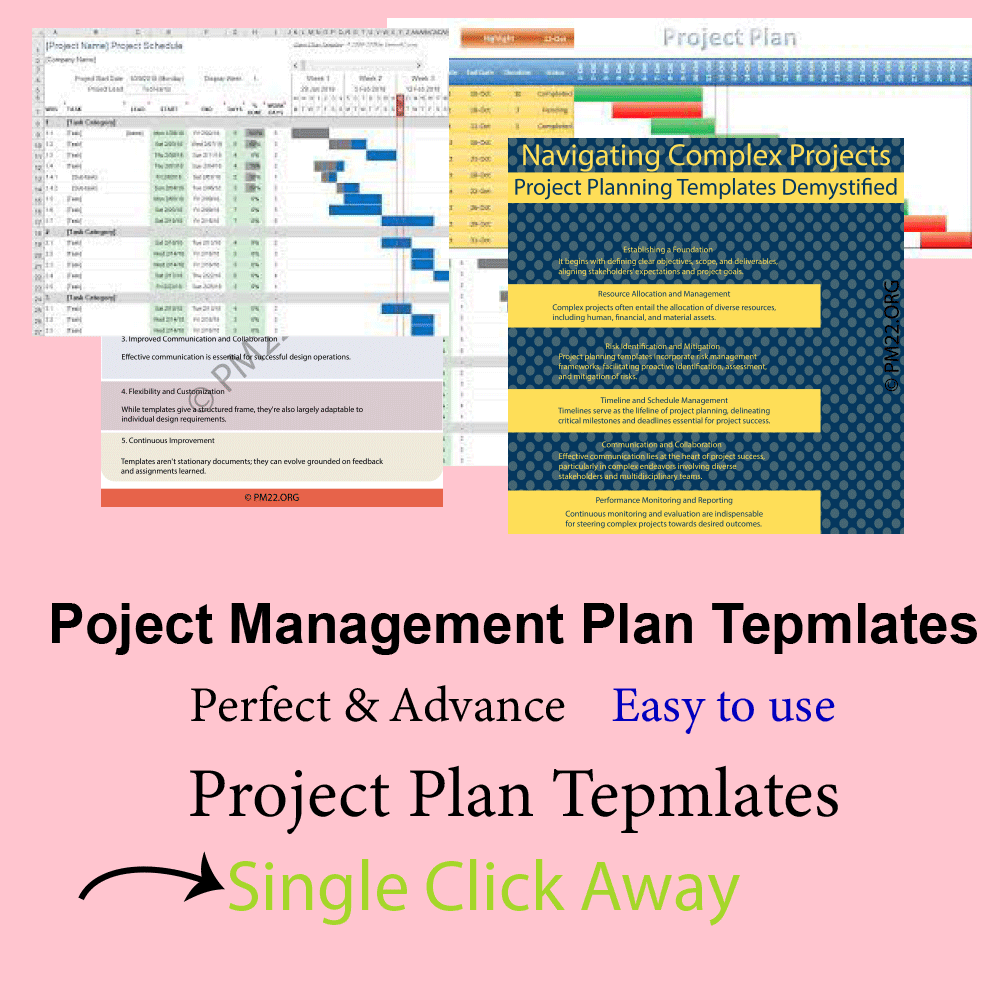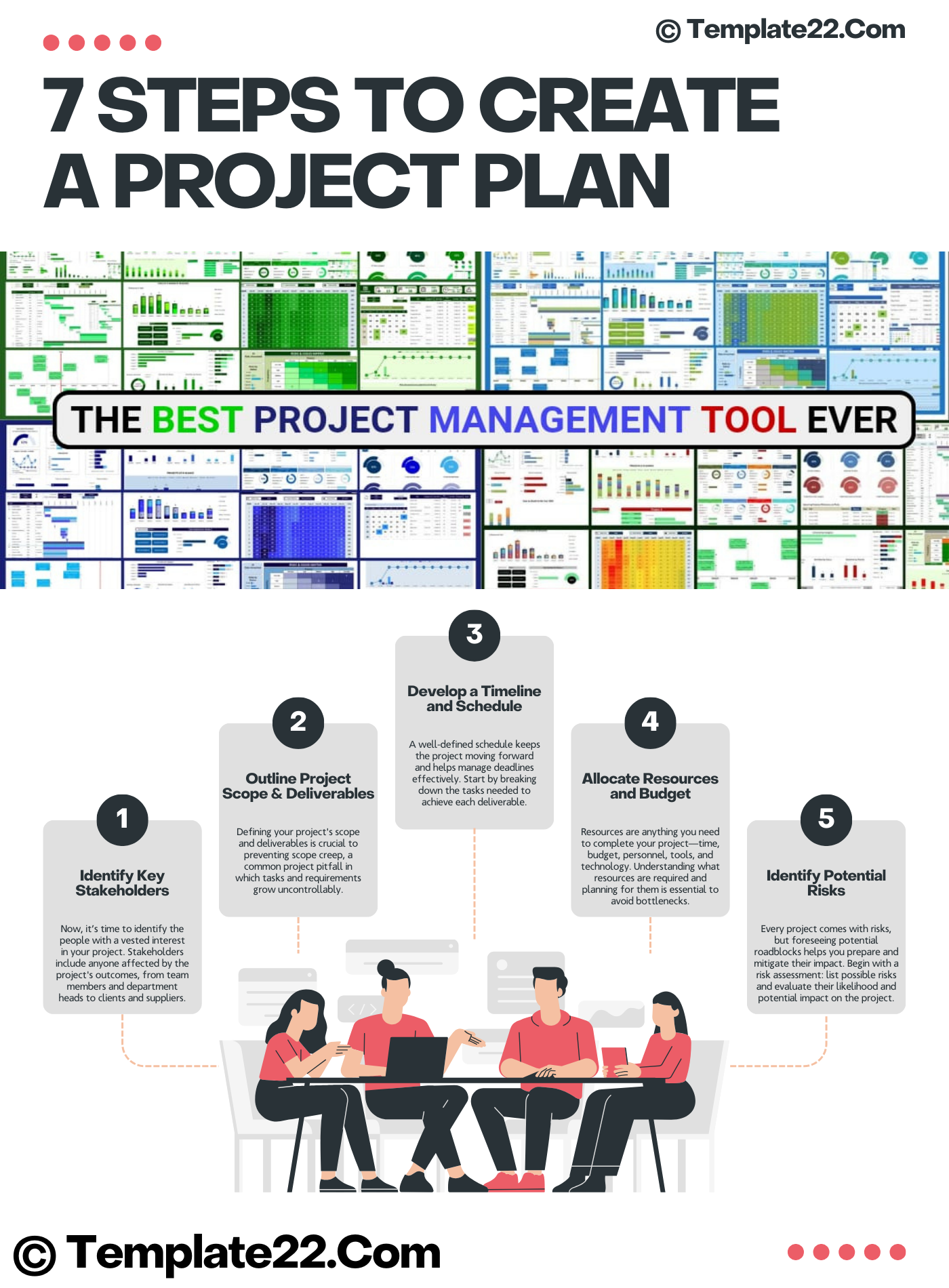 Creating a project plan may seem overwhelming, especially when a project’s success hinges on solid preparation. But with a clear structure, it can become much more manageable. Here, I’ll walk you through seven steps to build a project plan that keeps everyone aligned and on track, from start to finish.
Creating a project plan may seem overwhelming, especially when a project’s success hinges on solid preparation. But with a clear structure, it can become much more manageable. Here, I’ll walk you through seven steps to build a project plan that keeps everyone aligned and on track, from start to finish.
1. Define Your Project Goals
The first step is all about clarity. Defining the project’s purpose and objectives sets the foundation. Start by asking yourself a few critical questions:
- What are we aiming to achieve?
- Why is this project necessary?
- How will we know when it’s successful?
Breaking down these goals into specific, measurable, attainable, relevant, and time-bound (SMART) objectives helps create a solid direction. When everyone is aligned on the “why” and “what,” the “how” becomes much easier to tackle.
2. Identify Key Stakeholders
Now, it’s time to identify the people with a vested interest in your project. Stakeholders include anyone affected by the project’s outcomes, from team members and department heads to clients and suppliers.
Each stakeholder may have different expectations and input, so map out their roles, responsibilities, and interests early on. This will help you communicate more effectively and avoid misunderstandings later. Remember, effective stakeholder engagement can make or break your project.
CLICK HERE TO DOWNLOAD 300+ PROJECT MANAGEMENT TEMPLATES & DOCUMENTS IN EXCEL
3. Outline Project Scope and Deliverables
Defining your project’s scope and deliverables is crucial to preventing scope creep, a common project pitfall in which tasks and requirements grow uncontrollably. The project scope outlines the project’s boundaries, covering what is and isn’t included.
Create a list of specific deliverables, or outputs, that must be completed to meet the project’s goals. Be as detailed as possible, as this will serve as a reference point to keep the project focused. Consider using a work breakdown structure (WBS) to visually map out these deliverables in a hierarchical format.
4. Develop a Timeline and Schedule
A well-defined schedule keeps the project moving forward and helps manage deadlines effectively. Start by breaking down the tasks needed to achieve each deliverable. This breakdown will help you estimate the time required for each task and prioritize them accordingly.
For added clarity, create a Gantt chart or a project timeline, visually mapping tasks and their respective deadlines. A visual schedule also makes it easier to track milestones, stay on top of deadlines, and ensure that everyone is aware of their time frames.
5. Allocate Resources and Budget
Resources are anything you need to complete your project—time, budget, personnel, tools, and technology. Understanding what resources are required and planning for them is essential to avoid bottlenecks.
Identify which team members will handle specific tasks, and ensure they have the tools, software, or training they need to succeed. Next, estimate your project budget, and consider all expenses, from personnel and equipment to contingency funds for unforeseen costs. Budget management is key to ensuring your project remains feasible from beginning to end.
6. Identify Potential Risks
Every project comes with risks, but foreseeing potential roadblocks helps you prepare and mitigate their impact. Begin with a risk assessment: list possible risks and evaluate their likelihood and potential impact on the project.
Common risks might include resource shortages, technical issues, or unexpected delays. To manage these risks effectively, create a risk management plan. This plan should outline what actions to take if certain risks materialize, minimizing disruptions and keeping the project on track.
7. Establish a Communication Plan
A well-structured communication plan ensures everyone stays informed and connected. Determine the preferred communication channels (such as email, project management tools, or meetings) and define the frequency of updates for stakeholders and team members.
Your communication plan should include:
- Who needs to be informed at each project phase
- How often updates will be sent
- What details are needed in each update
Consistent, transparent communication prevents confusion, keeps team morale high, and ensures that stakeholders remain engaged. Effective communication keeps everyone in sync, which is essential for a smooth project flow.
CLICK HERE TO DOWNLOAD 300+ PROJECT MANAGEMENT TEMPLATES & DOCUMENTS IN EXCEL
Bringing It All Together
A solid project plan is like a roadmap. It provides clear directions, outlines responsibilities, and helps you foresee challenges before they arise. Here’s a quick recap of the seven steps:
- Define Project Goals – Clarify the purpose and set SMART objectives.
- Identify Stakeholders – Determine who is involved and map out roles.
- Outline Scope and Deliverables – Define project boundaries and list outputs.
- Develop a Timeline – Break down tasks and map out deadlines.
- Allocate Resources and Budget – Assign team members, estimate costs, and gather tools.
- Identify Risks – Conduct a risk assessment and create a mitigation plan.
- Establish a Communication Plan – Set up channels and update frequencies to keep everyone informed.
With these steps, you’re well-equipped to create a project plan that guides your team through every stage. A well-prepared project plan not only sets the stage for success but also fosters team alignment and stakeholder confidence. Now you’re ready to tackle your next project with clarity, direction, and confidence!
